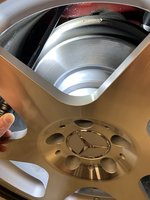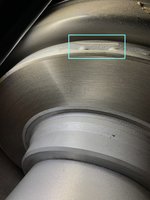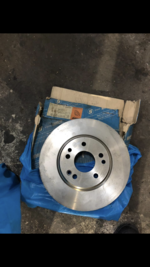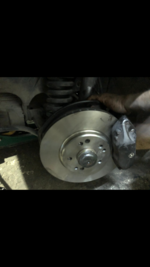I noticed recently that my front brake rotors are quite worn down -- both sides have definite lips on the edges. I don't recall ever replacing the rotors in the past, in the 17 years that I've owned the car, so it is past time. I am also extremely happy to replace them, as I've been waiting for years to replace the pads with the Akebono Euro pads that I've had in my parts stash.
I've ordered a set of coated rotors for the stock E500 320mm front brakes. You guys might know that these are "directional" rotors, meaning that the front left and right rotors are separate parts with separate part numbers.
So, I guess this will be another part of my job, but I'll save it until the end.
I've ordered a set of coated rotors for the stock E500 320mm front brakes. You guys might know that these are "directional" rotors, meaning that the front left and right rotors are separate parts with separate part numbers.
So, I guess this will be another part of my job, but I'll save it until the end.
















